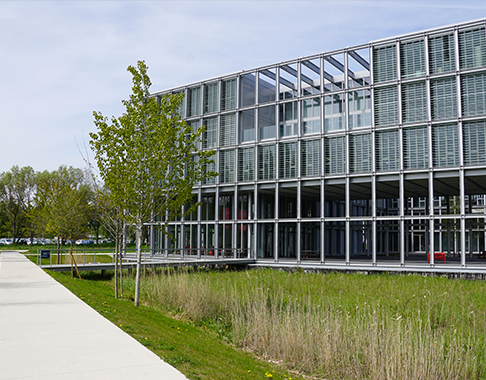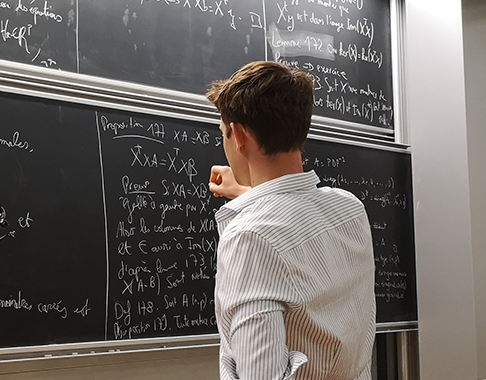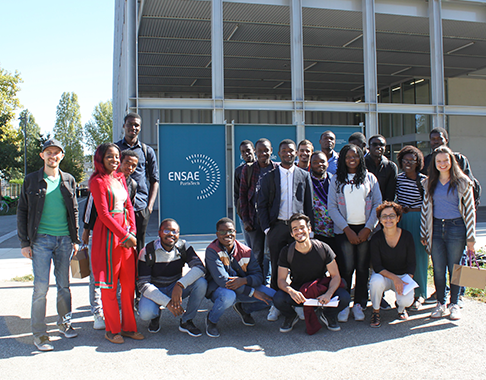Science of social and economic networks
ECTS:
4
Course Hours:
24
Tutorials Hours:
0
Language:
English
Examination Modality:
mém+CC
Objective
Aims
The study of social networks accompanied the development of quantitative sociology, and it is now blossoming through the joint contribution of multiple disciplines, including physics and applied mathematics. It is also developing within economics, shedding light on non-market interactions that affect trade, labor markets and the diffusion of innovations.
The goal of the course is to provide students with fundamental insight into network science and how it can be used in sociology, economics, management, politics, and data science. We will present essential concepts and theories at the intersection of different disciplines, showing applications to empirical problems. There will be elements of research design, focusing on how network science can be successfully integrated into a social science research project, and we will give you confidence in using key analytical tools and techniques with real-world data.
All social science and data science backgrounds are welcome, and students are not assumed to have any previous knowledge of network science. Familiarity with Python is helpful but not essential.
Learning Outcomes
On attending this course, you will be able to:
Demonstrate knowledge of the key principles, approaches and achievements of network science
Understand network data type, source and format
Compute and interpret network metrics to analyze network data
Visualize network data
Discuss similarities and differences between network science and classical social science
Develop network-oriented research questions
Design data analysis approaches for network data
Apply basic modelling principles for network data
Learning and teaching activities
We will meet eight times over February-March for three-hour sessions. Each session will consist of two parts, a lecture to present and discuss the main theories, and a tutorial to provide you with hands-on experience in network analysis and data visualization.
It is recommended that students bring their laptop with them. The proposed exercises will be done in Python.
There is also an important component of self-study with structured materials provided in class.
Assessment
Mid-term test (50%) and final project (50%).
Every week except holidays and the last session, you will be assigned a take-home exercise to consolidate your understanding of the ideas presented in class, to apply them in practice or to expand your knowledge of them. Some of these exercises are to be done individually, others in small groups. These exercises will not be graded, but give you examples of what will be asked in the mid-term test. Solutions will be provided.
The mid-term test is designed to assess your capacity to use the tools presented in class, and will include exercises like those done every week. In marking, we will value your effort and seriousness more than your actual results.
At the end of the course you will be asked to submit a mini-research project (to be done in two-person groups) applying network science to a social-science topic of your choice. We will guide you toward the definition of your topic throughout the course, and the exercises are also designed to feed into your final project – in the sense that you will be able to gradually build on their outcomes. The project counts 50% and will be submitted after the end of the course. The final project is marked according to five criteria, with max 10% marks for each of them: 1/Originality of the topic, 2/Suitability of the interpretation, 3/Quality of analysis, 4/Methods, and 5/Presentation.
All submissions can be in English or French.
Planning
Session Plan
An optional, preliminary session of 90 minutes on “Introduction to Python” is available for students with no previous familiarity with it.
Session 1, 7 Feb. (PT): Introduction to the course
General introduction to social network science; basic concepts to describe relationships and social structures; data formatting and storage; basic metrics and visualizations.
Session 2, 14 Feb. (PT): Analytical techniques for small networks
Centrality measures, substructures, connectivity indicators and distance.
Session 3, 28 Feb. (PT): Personal and ego networks
Techniques to trace the social environment of an individual, and applications: friendship, personal trajectories, social support, entrepreneurship.
Session 4, 6 Mar. (FG): Statistical approach to network science
Introduction to the statistical approach to large network analysis; random graphs, small world networks.
Session 5, 13 Mar. (FG + PT): Mid-term test; Theoretical models for complex networks
Topics in the statistical approach to large network analysis: Barabasi-Albert graphs, generation of networks with attributes (such as homophily and geographical distance).
Session 6, 20 Mar. (FG): Examples of model applications
Applied examples of weighted networks (co-occurrence of hashtags in Twitter, collaboration networks, airport networks, trade networks…).
Session 7, 27 Mar. (FG): Details on models
Session 8, 3 Apr. (PT & FG): Course conclusion; pre-project presentations
Students’ presentations (preliminary idea for end-of-course project).
References
Caldarelli, G. & Chessa, A. (2016). Data Science and Complex Networks: Real Cases Studies with Python. Oxford University Press.
Menczer, F., Fortunato, S. & Davis, C.A. (2020). A First Course in Network Science. Cambridge University Press.
Robins, Garry (2015). Doing Social Networks Research: Network Research Design for Social Scientists. Sage.









